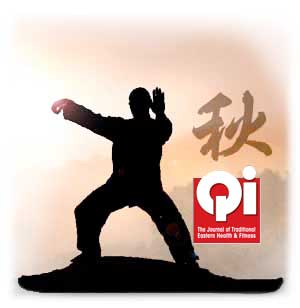What's in the Spring 2024 Issue?

Taiji: Reawakening the Power of the Single Cell
The single cell is where our life energy starts to flow. That first single cell's Yin and Yang power cause its first movement—to split. That cell will split and split and split, and this connected sequence of splits has never stopped. But what power makes that first cell split? What tells it to do that? What enables it to do that? Nobody in mainstream science can answer that. This is because they do not yet understand the nature and the power of Qi. By Master Waysun Liao
Does Qi Really Move?
The realm of Qi is a challenging one because it falls into that uncomfortable category of things that can't be measured, ordered, or observed. Many have attempted to do so as that is the deep drive that humans have to pull things out of the unknown and mysterious realms and place them neatly in well-labeled and organized boxes. The fear of the unknown and the anxiety that comes from not being able to control or explain things is what happens when the Intellectual Mind dominates our thinking process. By Francesco Garri Garripoli
 In Defense of Weaponry: Fitness, Qi Development, and Inner Peace
In Defense of Weaponry: Fitness, Qi Development, and Inner Peace
How could a weapon such as a sword be an instrument of peace or bring us closer to the Dao (Tao), the Way of Nature? As early as the Zhuangzi, the 4th Century BCE Daoist classic, the sword was linked with meditation. In the chapter "A Discourse on Swords", we read 示之以虛. "Those who practice the sword display emptiness." That is, they are free from thought and worry. As his predecessor Laozi said, "The sage empties the heart-mind, and fills the abdomen with qi." Zhuangzi then indicates a sword fencing strategy based on sensing incipient change and an ability to respond to an opponent's intent even before he/she has launched the attack. By Kenneth S. Cohen
Wu Kam Chuen's Family Heritage
The goal of this article is to show the genesis of the Wu Kam Chuen Family taijiquan practice, its distinct emphasis, and the close relationship of the early Yang and Wu families by briefly tracing the early and later close ties of family principals and practice. This is final part of a series covering the life and background of Wu Dai Kwai and his martial arts lineage. Authored with translations by Y.L. Yip & LeRoy Clark.

Departments:
Departments include “Bridging the Divide: TCM an Western Medicine” by Luo Shiwen, “Qingming Festival: Honoring Ancestors & Embracing Traditions” by Steven Luo, “TCM Inspired Springtime Foods for Optimum Health” by Rochelle Johnson, “Daodejing Chapter 2: The Dao Has No Opinion”, by Jonathan Snowiss, “Honoring the Past, and Embracing the Future: The New Era of Qigong Training” by Dr. Diego Sanmiquel, and “Spring Festival or Chinese New Year?” by James Evans. And of course we included our News section and random tidbits.
I hope you enjoy this, our 133rd consecutive issue of Qi Journal since 1991.
Subscription options available at www.qi-journal.com/subscriptions




